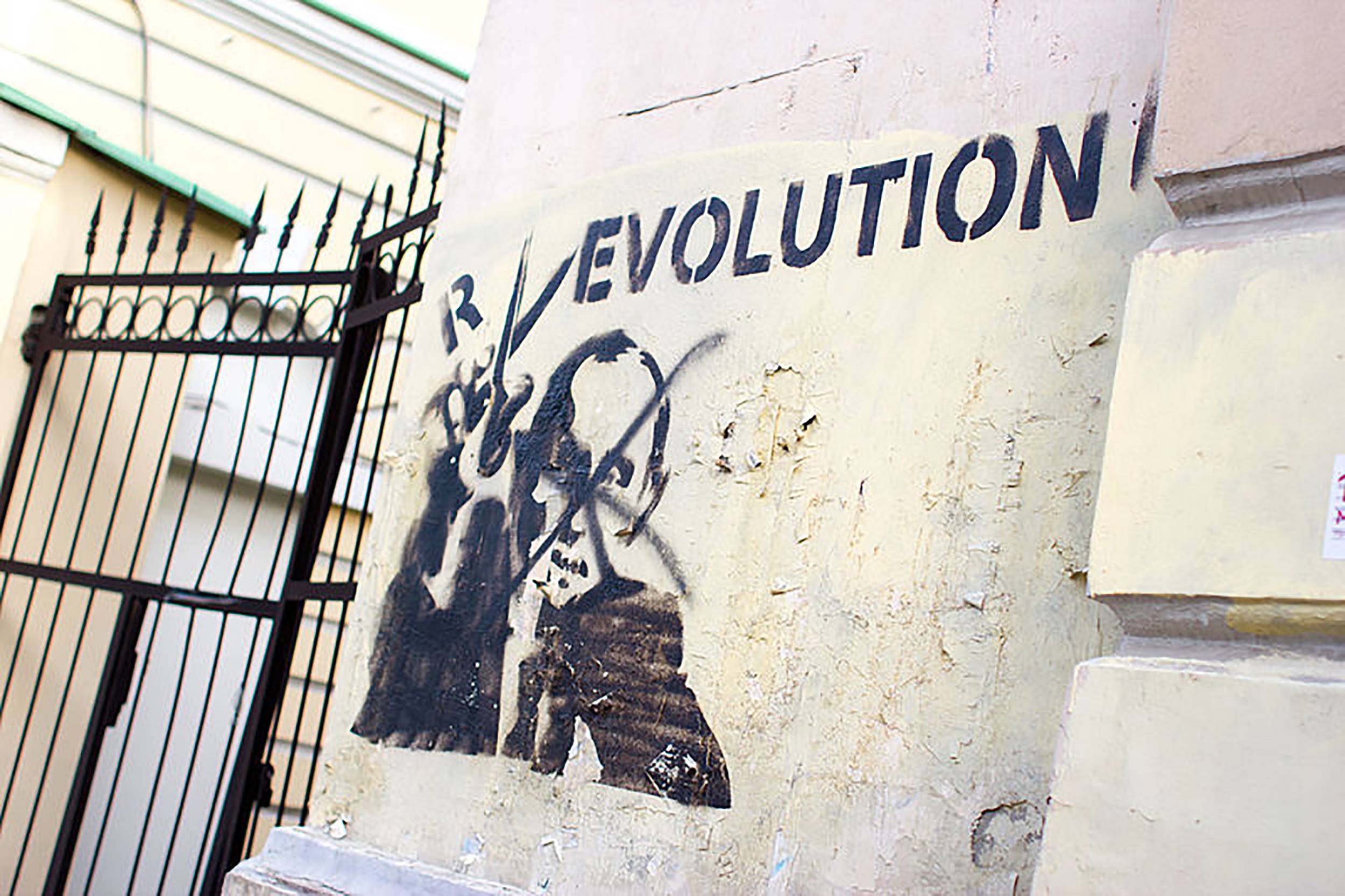Officials attempt to fight counterculture from the inside, censoring street art by killing everything it stands for.
Since the Russian military announced a state of emergency six days ago over wildfires engulfing the Siberian forest, Russian artists have turned to Instagram to show their solidarity against climate change. Using the hashtag #SibirGorit, which means “Siberia is burning”, photographs, artworks, and even graffiti on burned trees have been posted to the social networking platform.
Such graffiti could not be done in Moscow;artists now need to apply for a permit beforehand to ensure they don’t breach strict guidelines dictating acceptable content, topic, and tone.
Thanks to a new regulation, any new graffiti in the Russian capital needs to be documented and vetted by a committee before it goes up in public. Officials in Moscow have passed new censorship rules for graffiti and street art, which restrict the use of images to historical events, science, sports, and culture. Adopted last month, the new rules also limit how artists depict politicians, dictating that only “images popularizing prominent personalities” are permitted. No images of tobacco, pornography, drugs, or firearms are allowed either.
The bill also censors incitement of violence, cruelty, swearing, and insults relating to gender, race, nationality and, interestingly, profession. Artists are even banned from “undermining the trust of minors in parents and carers”. The new rules apply to all types of “inscriptions, images by painting, stickers, murals using the ‘graffiti’ technique”, and force all new graffiti to be carried out between the months of April to November.
According to the Russian news site Kommersan, the heavy regulations make it nearly impossible for artists to create street art. Artists must not only have permission from the owner of the building they want to decorate but also submit their designs to the metropolitan housing and communal services department, which has one month to decide on the artwork’s fate.
The bill came into action the same month the city of Yekaterinburg, 1,000 miles away from Moscow, hosted its annual, and illegal, graffiti festival, Stenograffia. Since 2010, artists from across the world have descended upon Russia’s fourth-largest city to make their mark, but this is the second time the Stenograffia itself has operated as a guerrilla festival. This year, Siberian muralist Danila Shmelev created one of his signature artworks by spray painting a street corner with hyperrealist torn plastic.
As part of the festival, a piece of street art depicting a cross was mysteriously covered up with asphalt. Last month, a cross in the style of supremacist art was partially destroyed by city workers tarmacing over the artwork. Posting on Instagram, the artist, Pokras Lampas, said he had been in contact with the mayor who has agreed to restore the work and find out who had damaged it: “This morning my work on Ekaterinburg Square had asphalt and gravel poured over it by communal utility services, but everything will be restored and the guilty parties identified. I am glad that contemporary art is becoming harder and harder to bulldoze over, to erase, to destroy. A huge thank you to everyone who has supported the project throughout this unpleasant incident.”
Across the world, various attempts to eradicate sites that encourage political graffiti have taken place in an attempt to stop further demonstrations.
Recently,the city of Prague has cracked down on graffiti on the Lennon Wall, a secluded square in the city opposite the French embassy, which became a graffiti hotspot during the early days of the fall of communism and the assassination John Lennon, but has since been co-opted by other political causes. On Sunday, the mayor of Prague blamed “drunk international tourists” for a surge in people writing their own message on the wall. Back in April this year, campaigners from Extinction Rebellion took over the wall to coincide with coordinated global activism on Earth Day. Protesters painted words like klimatické nouze, which means climate emergency in Czech.
In Hong Kong, protesters opposing the Extradition Bill have erected their own Lennon Wall in Kowloon Bay by writing anti-government messages on brightly colored sticky notes and posting along a busy footbridge. But the wall has become a target for vandals, who’ve been tearing up the notes and inciting violence towards the protesters.








